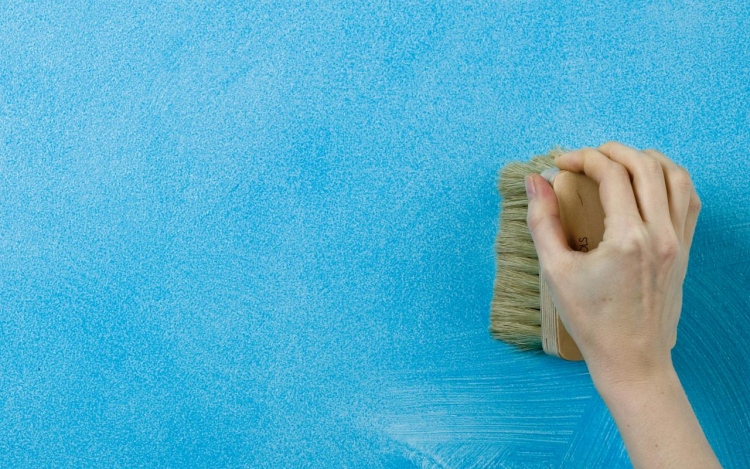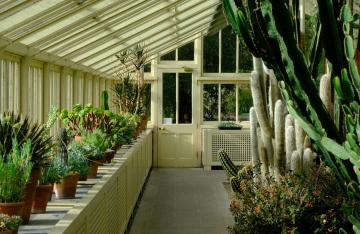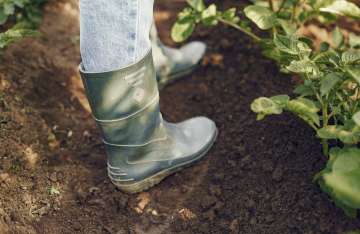Whitewashes and lime paints should be applied very thinly. The application should so thin that we can easily see the surface when it is still wet. The coating will look opaque when it is dry. It is better to have two very thin coats than one thicker coat of whitewashes or lime paint. When applying the wash, we should use large whitewash brush. In this case, we shouldn’t try to brush out the coating, like when we apply oil paint. Whitewash should be spread as quickly and evenly as possible. The whitewash should be made primarily of lime paste. Good results should be obtained when we use hydrated lime, but better results can be achieved if we use quicklime paste that’s slaked with specific amount of water, so it can become moderately stiff. We should keep the lime paste in the loosely covered contained for a few days. For larger projects, we could make 8 gallons of stiff lime paste by soaking 50 pounds of hydrated lime with 6 gallons of water or 25 pounds of quicklime with 10 gallons of water. Before using the stiff lime paste, we should strain th paste to remove foreign matter and lumps.
It should be noted that whitewash can be made from different combination of lime paste and additional ingredients. It should be noted that the two above formulas should be satisfactory enough for most purposes. We can also create glue binder by soaking casein with two gallons of hot water for a couple of hours. Then we should dissolve the tri-sodium phosphate with one gallon of water and we should add it to the casein. Next, we can stir the mixture until we are fully satisfied that the casein dissolves properly. Next, we can mix the solution with 3 gallons of water and some lime paste. Another formula of whitewash is by making moderately heavy cold lime paste, consisted of 8 gallons of water and 33 pounds of hydrated lime. Then, we could mix the paste with 5 gallons of skim milk. One gallon of whitewash should be enough to cover 270 square foot of plaster, 180 square foot of brick or 225 square foot of wood. For this reason, if we need smaller quantity, we could reduce the ingredient proportionally.
Some home owners want to have stippling effects or tiny paint dots for decorative effects. This is especially useful when we have uneven surfaces and we need to stipple it to hide the defect. There are simply ways to accomplish this result. We may need special brush for stippling purposes, especially those with stiff, short bristles. First, we could use a coat of paint to cover the surface using regular roller or brush. Then, when the surface is still wet, we could use dry stipple brush to make short strokes energetically. However, we should make sure that the lines don’t cross one another. If we do this properly, we could get clusters of dots. To keep the bristles of the brush dry and clean, we should with the brush with dry cloth.




